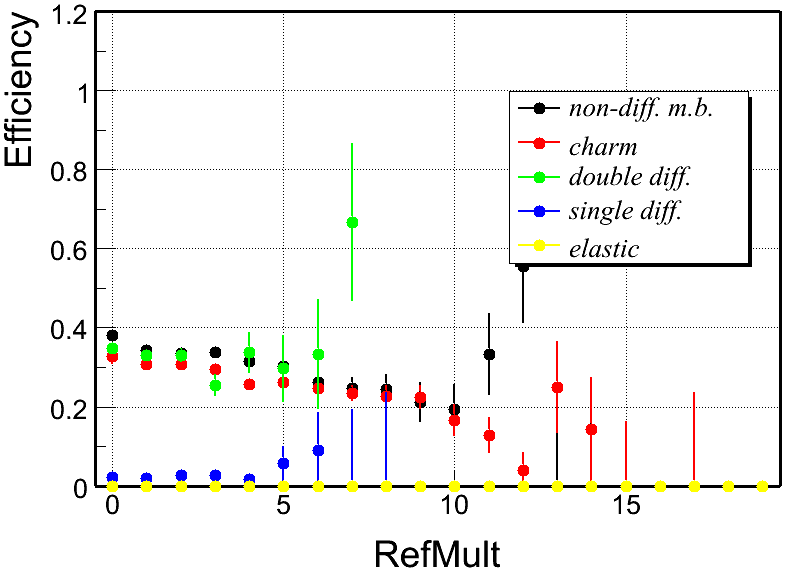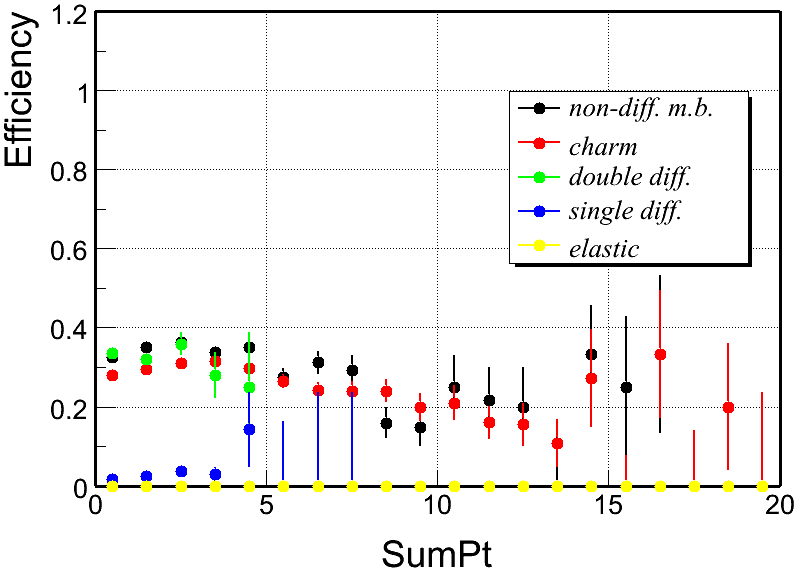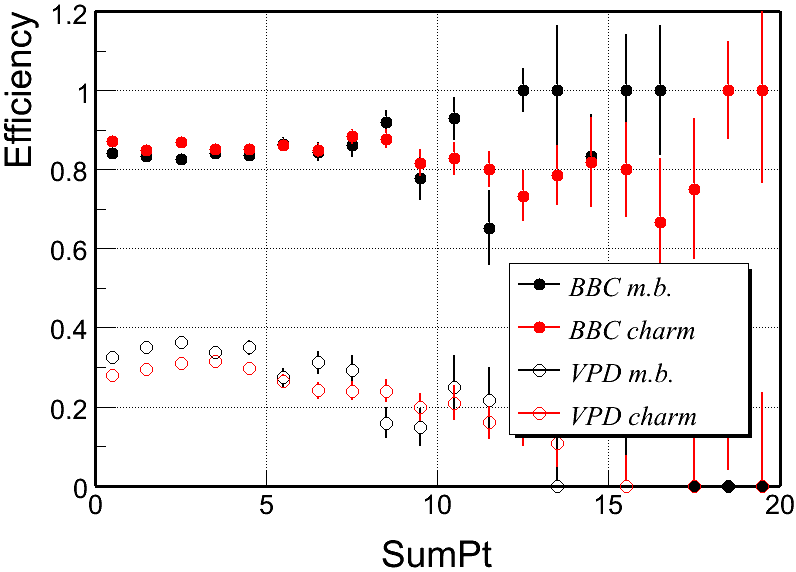VPD Efficiency Study with PYTHIA Simulations
The purpose of this study is to obtain the VPD efficiency under different physics processes (non-diffractive, double diffractive, single diffractive, and other selected physics events e.g. charm events). We start with the PYTHIA generator v6.205. The parameter setting for these processes in the PYTHIA are listed in Table 1:
| non-diffractive m.b. | charm events | double diffractive | single diffractive |
| MSEL=1 | MSEL=4 |
MSEL=0 MSUB(94)=1 |
MSEL=0 MSUB(92)=1 MSUB(93)=1 |
Table 1: PYTHIA parameters for different physics processes
Besides these, we also include the "CDF TuneA" parameters for non-diffractive m.b. and charm events:
MSTP (51)=7
MSTP (82)=4
PARP (82)=2.0
PARP (83)=0.5
PARP (84)=0.4
PARP (85)=0.9
PARP (86)=0.95
PARP (89)=1800
PARP (90)=0.25
PARP (91)=1.0
PARP (67)=4.0
PYTHIA events were generated with vertex smearing sigma_xy=0.01cm, sigma_z=60cm, and |Vz|<30cm. Events went through the y2009 STAR geometry and processed via the standard reconstruction chain:
trs,fss,y2009,Idst,IAna,l0,tpcI,fcf,ftpc,Tree,logger,ITTF,Sti,VFPPVnoCTB,NoSvtIt,NoSsdIt,bbcSim,btofsim,tags,emcY2,EEfs,evout,-dstout,IdTruth,geantout,big,fzin,eemcDb,beamLine,clearmem
Here "btofSim" is the nearly StBTofSimMaker which includes the fast simulator for VPDs. This part still need more work for improvement. Currently, we take 100% detector responsing efficeincy.
The following figures show the efficiency results for different physics processes. As a comparison, I also include the BBC efficiency. I plot the efficiency vs TPC refmult and also vs TPC sumPt (here I calculated the sumPt from the reconstructed vertex. For reconstructed vertex, I pick up the vertex within |Vz-Vz_MC|<1.5cm and with the highest rank (didn't require to be >0 as the efficiency is only 50%, and since these are single pythia event, no worry about the pile-up issues).
| BBC Efficiency | VPD Efficiency | Efficiency comparison |
 |
 |
 |
 |
 |
 |
Figure 1: BBC and VPD efficiency for various physics processes in PYTHIA.
1) The BBC efficiency is around 85% which is quite consistent with early STAR studies. And there are almost no difference for BBC efficiency in non-diffractive m.b. events and charm events.
2) The VPD efficiency shows some dependence on the mid-rapidity multiplicity/sumPt. There seems to be some visible difference for VPD efficiency in non-diffractive m.b. events and charm events. To look into detail, Figure 2 shows the efficiency ratio between charm events and m.b. events. For VPD efficiency, the ratio averages 0.88 +/- 0.02.

Figure 2: Efficiency ratio of charm events/m.b. events for BBC and VPD respectively.
- dongx's blog
- Login or register to post comments
